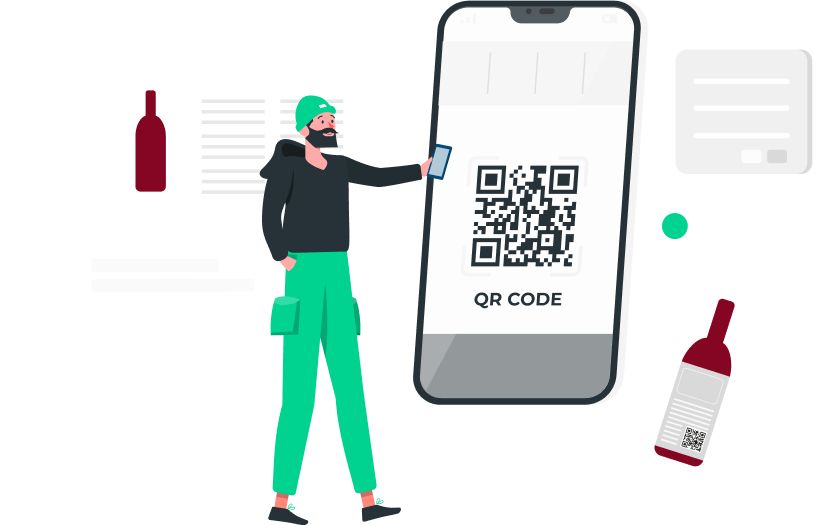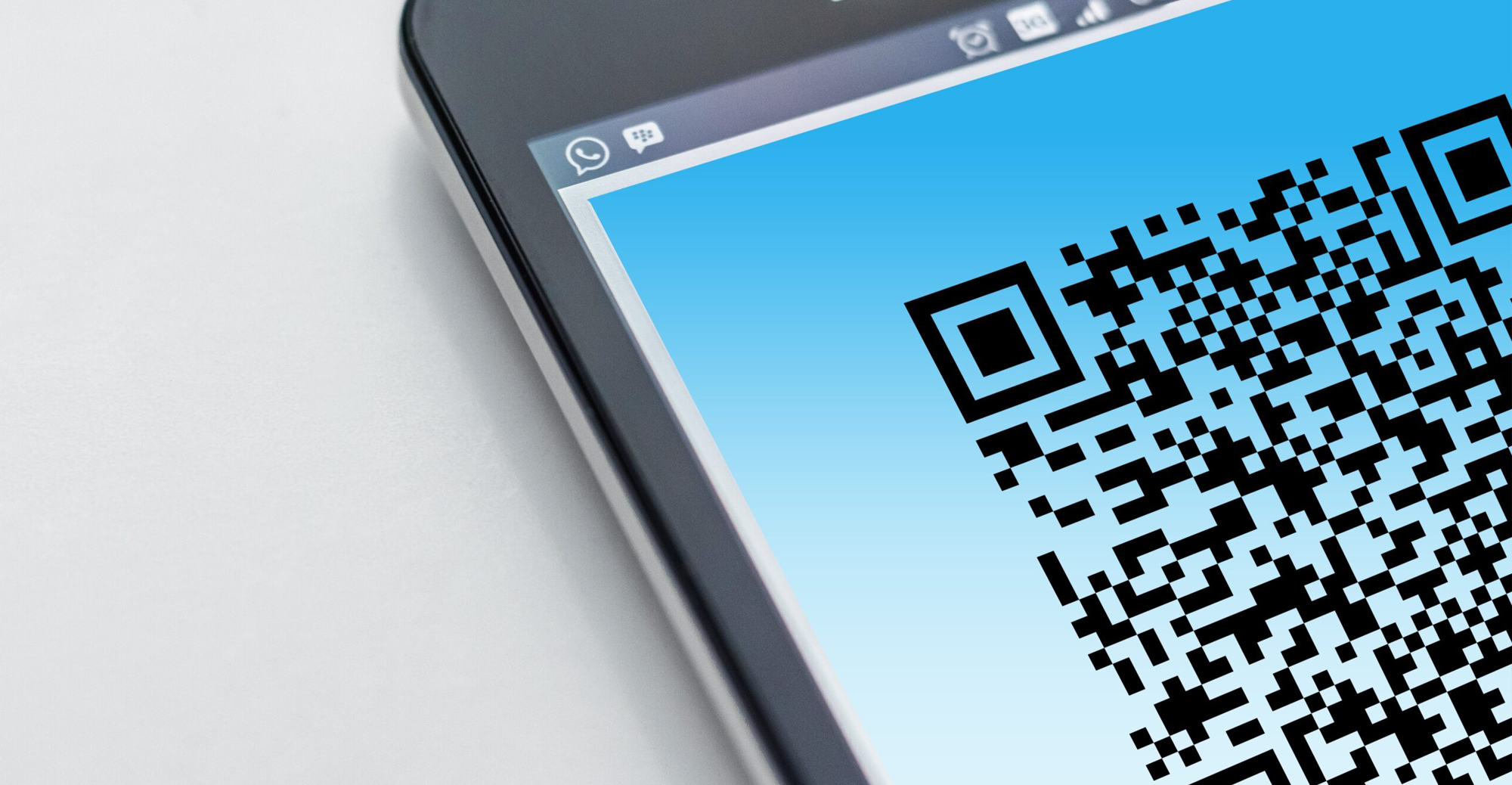In recent decades, the global landscape of business and technology has witnessed a paradigm shift with the integration of Quick Response (QR) codes. These two-dimensional barcodes have not only streamlined processes but have also enhanced consumer engagement across various sectors.
One industry where the transformative power of QR codes is profoundly evident is the wine industry. Embracing QR codes in wine labeling and e-labeling is no longer a trend, it’s a necessity.
This article explores the role of QR codes, their relevance in complying with new EU wine labeling regulations, and the specific advantages they offer in the context of wine labeling.
The advantages of QR codes in wine labeling

Wineries are choosing QR codes for compliance due to these significant benefits:
- Automatic translation: The QR code allows automatic translation of the label into the customer’s preferred EU language, depending on where the user is scanning it.
- Real-time updates: Information stored within QR codes can be updated in real-time. For example, if there is a change in the production process or ingredient list, producers can modify the online content linked to the QR code without the need for label redesigns.
- Streamlined information: QR codes allow wine producers to provide extensive information about their products without overwhelming the traditional label with excessive text. This streamlined approach enhances the overall design aesthetics while ensuring compliance.
- Avoid physical label changes: You can avoid large changes to your physical labels. The QR code on the label takes up minimal space, maintaining the design while providing consumers with the requested information.
- Environmental sustainability: By reducing the need for extensive paper labels, QR codes contribute to environmental sustainability. This aligns with the growing consumer preference for eco-friendly products and practices.
Find the simple way to comply with wine label regulations with our easy-to-follow guide!
The role of QR codes in complying with new EU regulations?
The EU has consistently emphasized the importance of transparent information for consumers. In response to this, the EU has introduced new labeling wine regulations governing the labeling of products, including wines.
QR codes have emerged as a practical solution to meet these requirements efficiently and effectively. According to EU regulations, wine producers are mandated to provide detailed information about their products. QR codes enable producers to present this information comprehensively without cluttering the label.
This dynamic method ensures that consumers can access all necessary details about the product by simply scanning the QR code with their smartphones.
Are QR codes safe to use?
QR codes are safe to use, provided that they are generated properly and used in appropriate settings. The level of security they provide depends on several factors, such as:
- how they are generated,
- where they are used,
- and what information they contain.
QR codes have revolutionized the way we interact with information, businesses, and services, and have become a ubiquitous part of our daily lives. They have found their way into various applications, including contactless payments, restaurant menus, and event tickets.
When to use QR codes
- Convenience and efficiency: QR codes are incredibly useful for providing quick access to information. In situations where convenience and efficiency are paramount, such as accessing a menu in a restaurant or downloading an app, QR codes can enhance user experience.
- Contactless transactions: Especially in the wake of the COVID-19 pandemic, QR codes have been widely used for contactless payments and transactions. They provide a safer way to make payments without physical contact with cards or cash.
- Information sharing: QR codes are effective for sharing detailed information. For instance, museums and historical sites can use QR codes to provide visitors with in-depth details about exhibits and artifacts.
- Marketing and advertising: QR codes can be utilized in marketing campaigns, allowing consumers to quickly access promotional offers, websites, or product details by scanning the code. In this context, QR codes can enhance engagement and customer interaction.
- Event management: QR codes are valuable in event management for tasks such as ticketing and attendee check-ins. They streamline the process and reduce the need for physical tickets or paperwork.
When not to use QR codes
- Security-sensitive information: QR codes should never be used to convey sensitive or personal information, such as social security numbers, passwords, or financial details. Transmitting such data via QR codes could lead to privacy breaches and identity theft.
- Untrusted sources: Users should be cautious when scanning QR codes from untrusted or unknown sources. Malicious QR codes can direct users to phishing websites, malware downloads, or other malicious content. It’s important to verify the source before scanning a QR code.
- Health and safety: In some contexts, such as healthcare or emergency situations, relying solely on QR codes might not be ideal. In emergencies, people might not have the time or ability to scan a code, so redundant systems or alternative methods of communication should be in place.
- Overcomplication: Using QR codes for simple tasks that do not significantly enhance user experience might lead to unnecessary complexity. For instance, using a QR code to display a single-line text message that could be easily typed out might not be the best use of the technology.
Evaluating QR code safety measures

- Security protocols: Reputable platforms and applications, such as Craft Technology, implement security protocols to validate QR codes. These measures ensure that the codes being scanned are legitimate and safe. Users should be cautious when scanning codes from unknown or unverified sources.
- QR code scanning apps: Using trusted QR code scanning apps from reputable app stores can add an extra layer of security. These apps often come with built-in features to detect malicious codes and warn users before opening suspicious links.
- Operating system updates: Keeping the smartphone’s operating system up-to-date is crucial. Manufacturers regularly release security patches that address vulnerabilities, making it difficult for attackers to exploit security loopholes in QR code scanning processes.
Craft Technology complies with all security criteria when handling data collection. After scanning the QR code, consumers see only the information required by the EU regulation on wine products.
Find the simple way to comply with wine label regulations with our easy-to-follow guide!
For more information:

